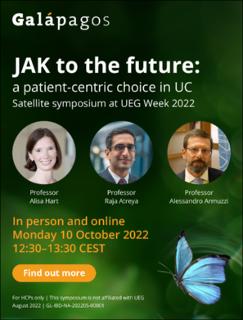| dc.contributor.author | Castro Tejera, Valeria | |
| dc.contributor.author | Öhman, Lena | |
| dc.contributor.author | Aabakken, Lars | |
| dc.contributor.author | Fellström, Bengt | |
| dc.contributor.author | Hausken, Trygve | |
| dc.contributor.author | Hovde, Øistein | |
| dc.contributor.author | Hreinsson, Johann P. | |
| dc.contributor.author | Lindberg, Greger | |
| dc.contributor.author | Venge, Per | |
| dc.contributor.author | Simrén, Magnus | |
| dc.contributor.author | Törnblom, Hans | |
| dc.date.accessioned | 2023-08-18T10:16:02Z | |
| dc.date.available | 2023-08-18T10:16:02Z | |
| dc.date.created | 2022-10-24T13:54:36Z | |
| dc.date.issued | 2022 | |
| dc.identifier.citation | Alimentary Pharmacology and Therapeutics. 2022, 56 (6), 968-979. | en_US |
| dc.identifier.issn | 0269-2813 | |
| dc.identifier.uri | https://hdl.handle.net/11250/3084783 | |
| dc.description.abstract | Background: Low-grade immune activation in the gut is a potential treatment target in irritable bowel syndrome (IBS).
Aims: To determine improvement in IBS symptoms after mesalazine treatment, and the utility of measures of immune activity in the rectal mucosa METHODS: This was a randomised, double-blind, placebo-controlled, parallel-arm, multicentre trial in subjects with IBS (Rome III criteria), with an eight-week treatment period of mesalazine 2400 mg or plcebo once-daily. The primary endpoint was the global assessment of satisfactory relief of IBS symptoms in ≥50% of weeks during intervention. IBS symptoms were also measured with the IBS severity scoring system; immune activity was measured by mucosal patch technology. A post hoc meta-analysis of randomised placebo-controlled trials of mesalazine in IBS was added.
Results: Of 181 included patients, 91 received mesalazine and 90 received placebo. The primary endpoint was met by 32 (36%) patients after mesalazine and 27 (30%) after placebo (p = 0.40). There were no differences in response rates related to IBS subtype or post-infection symptom onset. More reduction of abdominal bloating was noted in the mesalazine group (p = 0.02). The meta-analysis showed no effect of mesalazine on IBS symptoms. No mucosal patch technology measure could predict response to mesalazine, and found no differences in the effects of intervention on levels of immune markers.
Conclusions: Mesalazine is ineffective in reducing IBS symptoms. Rectal measures of immune activity by the mucosal patch technology cannot predict a higher chance of response to mesalazine. | en_US |
| dc.description.sponsorship | This study was funded by Eurostars project grant E!5691, an unrestricted grant from Tillotts Pharma AB (mesalazine (Asacol) and placebo), and by grants from the Swedish state under the agreement
between the Swedish government and the county councils ALFagreement (ALFGBG 295071, 620,221, 726,561, 875,581). | en_US |
| dc.language.iso | eng | en_US |
| dc.publisher | John Wiley & Sons Ltd. | en_US |
| dc.rights | Attribution-NonCommercial-NoDerivatives 4.0 Internasjonal | * |
| dc.rights.uri | http://creativecommons.org/licenses/by-nc-nd/4.0/deed.no | * |
| dc.subject | Biomarkers; | en_US |
| dc.subject | Clinical Protocols; | en_US |
| dc.subject | Double-Blind Method; | en_US |
| dc.subject | Humans; | en_US |
| dc.subject | Multicenter Studies as Topic; | en_US |
| dc.subject | Randomized Controlled Trials as Topic; | en_US |
| dc.subject | Treatment Outcome; | en_US |
| dc.subject | Irritable Bowel Syndrome* / drug therapy; | en_US |
| dc.subject | Mesalamine* / therapeutic use; | en_US |
| dc.title | Randomised clinical trial and meta-analysis: mesalazine treatment in irritable bowel syndrome—effects on gastrointestinal symptoms and rectal biomarkers of immune activity | en_US |
| dc.title.alternative | Randomised clinical trial and meta-analysis: mesalazine treatment in irritable bowel syndrome—effects on gastrointestinal symptoms and rectal biomarkers of immune activity | en_US |
| dc.type | Peer reviewed | en_US |
| dc.type | Journal article | en_US |
| dc.description.version | publishedVersion | en_US |
| dc.rights.holder | This is an open access article under the terms of the Creative Commons Attribution-NonCommercial-NoDerivs License, which permits use and distribution in any medium, provided the original work is properly cited, the use is non-commercial and no modifications or adaptations are made. © 2022 The Authors. Alimentary Pharmacology & Therapeutics published by John Wiley & Sons Ltd. | en_US |
| dc.source.pagenumber | 968-979 | en_US |
| dc.source.volume | 56 | en_US |
| dc.source.journal | Alimentary Pharmacology and Therapeutics | en_US |
| dc.source.issue | 6 | en_US |
| dc.identifier.doi | 10.1111/apt.17182 | |
| dc.identifier.cristin | 2064464 | |
| cristin.ispublished | true | |
| cristin.fulltext | original | |
| cristin.qualitycode | 1 | |

